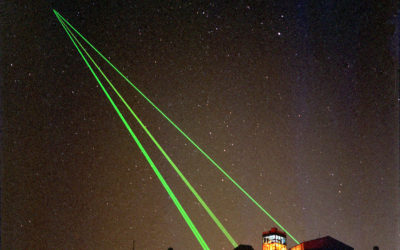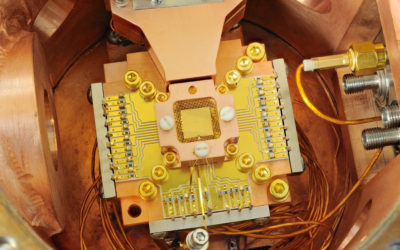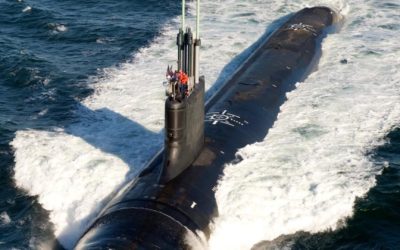“God mode”, for those who aren’t gamers, is a mode of operation (or cheat) built into some types of games based around shooting things. In God mode you are invulnerable to damage and you never run out of ammunition.
Japan needs stronger deterrence than its new defense strategy signals
Japan needs stronger deterrence than its new defense strategy signals
Japan needs stronger deterrence than its new defense strategy signals
Since World War II, Japan had long chosen not to possess long-range strike capabilities that could be used against enemy bases. But the Japanese government changed course in December 2022 when it adopted the new national defense strategy (NDS), which included a commitment to acquiring a so-called counterstrike capability. But in order for this new strategy to contribute to deterrence and alter the nation’s defensive role as the ‘shield’ in its alliance with the United States, Tokyo needs to go further than what the NDS outlines.
The NDS says that by possessing counterstrike capabilities, ‘Japan will deter armed attack itself.’ But as it stands, that’s not certain.
Japan’s current deterrence policy is multi-layered to address varying threats, and it’s an appropriate mix of ‘deterrence by denial’ and ‘deterrence by punishment’. Police and the Self-Defense Force (SDF) can be deployed to respond to threats in the low-intensity ‘grey zone’, as shown by the recent stationing of new SDF units in Japan’s southwestern islands to deter increasingly common intrusions by Chinese ships. Were confrontation to escalate into the ‘red zone’, Japan would protect itself from ground invasion by fully mobilizing the SDF and using missile defenses to intercept a limited number of long-range missiles. Finally, Japan relies on US extended deterrence to manage nuclear threats—categorized as the ‘black-white zone’.
But the effectiveness of Japan’s deterrence in the ‘red zone’ is being threatened by the deterioration of regional security in East Asia. The missiles of China and North Korea are growing in number and sophistication, and they could penetrate Japan’s missile defense. Although the aim of Japan’s missile defense is not to counter hundreds of missiles, it should still be able to deter a ‘cheap shot’ from the enemy, as in a small number of missile attacks intended to threaten the public and end a war on the adversary’s terms.
Japan’s new counterstrike capabilities would contribute to deterrence by attacking enemy’s missile launchers and command-and-control systems, reducing the number of missiles coming from the continent and enabling missile defenses to intercept them. But the NDS reiterates that strikes against enemy missile bases are only lawful after an initial attack against Japan, and so these counterstrike capabilities remain essentially defensive. And targets can only be military. Strikes against the enemy’s cities or population—so-called counter-value strikes—are to be left to US strategic forces.
Were Japan’s new counterstrike capabilities to go further and contribute to deterrence by denial at the threshold where the enemy threatens nuclear strikes, then Tokyo would need to work on three areas key to damage limitation—more comprehensive counterstrike capabilities, missile defense and civil protection.
There are plans to boost counterstrike capabilities by improving the SDF’s Type 12 surface-to-ship guided missile, developing high-speed glide missiles for island defense and purchasing Tomahawk cruise missiles from the US that have the ‘stand-off’ capability to strike an opponent at greater range. But it’s not clear whether the Tomahawk remains sufficiently fast and maneuverable to penetrate the latest missile defense systems. Even when the missiles reach their target, they may not destroy it. For instance, when the US military struck a Syrian airstrip in 2017, the airstrip was restored within a short time. Therefore, Japan cannot be confident that its Tomahawk capability alone will destroy the opponent’s fixed missile-launching bases, underground command centers or other military facilities effectively enough to stop further attacks.
It would be a challenge to improve the destructive potential of the Tomahawk and the other missiles. But if Japan could possess cruise missiles capable of directly threatening mainland China, that would force Beijing to strengthen its air defenses, complicating its strategic calculations.
Which brings us to Japan’s own missile defense system. The NDS includes plans to improve warning and control radars and surface-to-air guided missiles, and to procure more Aegis combat system equipped vessels, but Tokyo must go further. It must improve the resilience of its bases and critical infrastructure for when an enemy missile hits its target. The NDS contains no concrete plans to prepare airstrips and ports for attacks or to quickly restore any that are hit to full operation. What’s more, Japan’s existing missile defense system only assumes attacks by ballistic missiles, so it needs to become capable of intercepting other types including cruise missiles. Japan must also develop medium- and short-range surface-to-air missiles and plan responses by aircraft to cope with cruise missiles.
Finally, Tokyo’s plan to protect the public must go further than what the NDS outlines. It currently aims to formulate evacuation plans using ships and aircraft, strengthen civil protection training and improve the national early warning system. But compared to the US civil protection policy during the Cold War, this is limited. The strategy states: ‘Japan will facilitate initiatives for civil protection, including evacuation guidance for residents, when an invasion of Japan is predicted’, but if a residential area were to become the battlefield, it would be extremely difficult for the SDF to simultaneously carry out combat and evacuation operations.
Admittedly, a public protection role might prove to be a double-edged sword. The more evacuation training military personnel do, the more prepared they are, but they also become more anxious, so striking the right balance is a challenge.
With that in mind, the Japanese government should still do more—specifically, to plan for evacuation in the event of a blockade of Japan’s southwestern region. By improving the process of stockpiling food and medicine, people in the region can continue to live their lives even if supplies are disrupted.
Republished from the Australian Strategic Policy Institute (ASPI) under a Creative Commons license in the Commonwealth of Australia. Read the original article.

Shinichi Hirao is an officer of the Japan Ground Self-Defense Force. He received his BA in Law from the University of Tokyo and a master’s degree in public policy from the University of Virginia.
Rena Sasaki is a graduate student at the School of Foreign Service at Georgetown University. She has engaged in defense and security projects with the Japan’s Ministry of Defense and the defense industry for more than five years. The views and opinions expressed here are the authors’ own, and do not necessarily reflect those of any organization with which they are or were affiliated, including the Japan Ground Self-Defense Force.
Related Articles
Understanding the building blocks for Australia’s quantum future
Australia is undergoing an exciting period of strategic technology policy review and development. The release of its first National Quantum Strategy this week committed the government to building the world’s first error-corrected quantum computer. This is a strategically important technology that has the potential to improve productivity and supply chain efficiency in diverse industries, lower costs across the economy, help reduce carbon emissions and improve public transportation.
Nuclear-powered submarines are vital to Australia’s defense
When I was Australia’s ambassador to the United States, I visited General Dynamics Electric Boat in Groton, Connecticut, one of two yards constructing the Virginia-class submarines. A Virginia was the backdrop in San Diego last month for the three AUKUS leaders’ announcement of Australia’s path to acquiring nuclear-powered submarines (SSNs).



